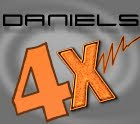After nearly 4 months of journal entries on trades, there is one constant that remains the same. Price behaves the same way the majority of the time. This journal for me has actually turned into a training tool and not only for me, but for others as well. I don't mind that at all. Sharing the knowledge that I am learning, especially knowledge that produces positive results is very rewarding for me. It also keeps me on my toes. I have had other traders like Dick, Rob, Myron, Rodney, Steve, and Panos tell me that this blog has had a positive impact for them and even stumped me at times with some questions. It has helped me to dig even deeper. Patterns, range extremes, divergence- all have their place in trading. To me, price action and it's behavior becomes more clear everyday and I post these set ups only to show that it happens over and over and to re-affirm that price is the only indicator you need. One particular set up that I have noticed become one of the highest probable winners is restest of a consolidated fractal. Of course, there are always fractals, but some are so well defined that if you only traded this particular method,

you could profit quite often. Rob pointed the trade on the USD/CAD out to me. I realize that I post trades that have already passed sometimes. My goal for that is to get the attention to recognize these attributes and then anticipate these to happen again. The USD/CAD one hour chart shows a clear area of consolidation of price. Support for an entire trading day held, however, the next day was broken. A quick rally to the base of support into TSR paid quickly. One that I was stalking, but missed was the EUR/CHF pair. I don't know that I have ever traded this pair but it seems to be a nice one to look at. I was looking to go short as the pair was approaching a base on the daily, which I did n

ot post here but can be seen on a daily chart. This one hour shows an area of sensativity around 1.5157. After a big run up on 11-13, it held above that level for 4 hours before committing below and on the first retest of TSR you would have been paid 30 pips. The after math of 100 pips is always pretty to see, but you never know if you are going to get that or not. The concept that stands out to me, as taught to me by my mentors has been to get a good entry at the "right" level which I call TSR, then take profit. Usually, after a break and commitment from a key area like the 1.5157, if you take the first retest, you will get paid a high majority of the time. Even after going like the energizer bunny straight up on 11-13, when it closed above, the first retest of that area LONG paid 30+ pips. I would not want to trade long after a parabolic move, but I am just proving the point that these areas are very sensative and when price approaches them, it comes off quickly. To me, that is why locating and watching price at these areas is so important. Price does this over and over. Looking at multiple pairs, you can locate these areas and then just wait until price reaches them, then let price tell you if it is going to commit or not. It comes down to what trade is going to give you the highest probability. A trader can scalp, intraday trade, swing trade or trade any way they want but if they will look for TSR and practice this, journal this, price will validate and will be the main factor in their decision. The bodies or closings and opens, certain wicks that hit the level and come off quickly (better seen on a lower time frame) and even doji closes like seen on the USD/CAD pair shown can give a more clear picture of where the true price level that is the axis for price to hold above or break below. This will improve entries and help to secure profit sooner and quicker. Price will show us, all we have to do is watch.


























